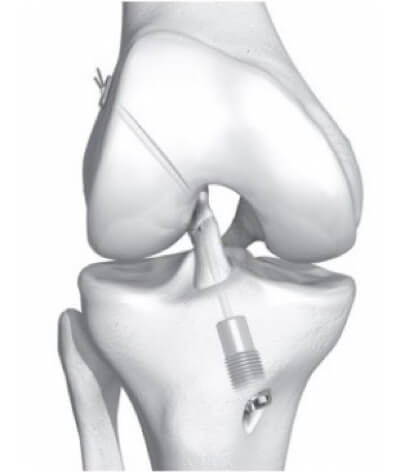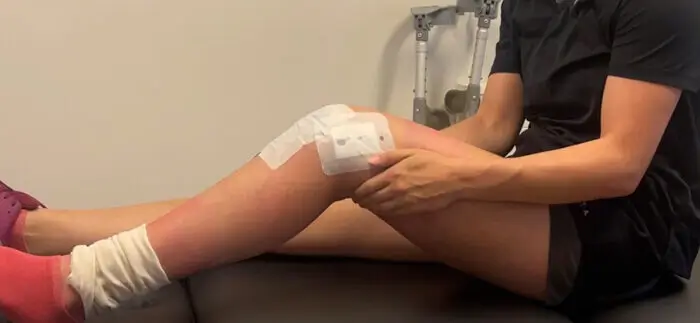Pros and cons of anterior cruciate ligament (ACL) repair
The surgical procedure of anterior cruciate ligament (ACL) repair is currently only permitted in the Netherlands for study purposes. In this blog, we will explore the pros and cons of ACL repair.
Pros
Less invasive:
ACL repair is less invasive than ACL reconstruction. It does not require harvesting a tendon to create a new ligament. This results in less pain and limited range of motion during the initial stages of knee rehabilitation.
Preservation of the specific cruciate ligament anatomy:
When suturing the anterior cruciate ligament (ACL), the ligament itself is preserved, thereby maintaining the anatomy and specific characteristics of the ACL. This ensures the integrity and unique properties of the ACL remain intact.
Preservation of the specific cruciate ligament anatomy:
When suturing the anterior cruciate ligament (ACL), the ligament itself is preserved, thereby maintaining the anatomy and specific characteristics of the ACL. This ensures the integrity and unique properties of the ACL remain intact.
Potential reduced risk of knee osteoarthritis:
First and foremost, the likelihood of developing early-onset knee osteoarthritis increases in individuals who have experienced an anterior cruciate ligament (ACL) injury, regardless of whether they undergo ACL repair. Thus, even after ACL repair, the risk of early-onset osteoarthritis remains elevated. Currently, studies have only demonstrated in animal models that the development of knee osteoarthritis after ACL repair progresses at a slower rate. The impact of this phenomenon on humans is yet to be investigated.
Shorter recovery time:
Because anterior cruciate ligament (ACL) repair is less invasive than the conventional ACL reconstruction, it can result in a shorter recovery time and a faster return to activities. However, the rehabilitation duration for resuming sports activities remains similar between the two procedures.
Muscles are preserved
During an anterior cruciate ligament (ACL) reconstruction, a tendon needs to be harvested. However, in ACL repair, this is not necessary. The muscle groups remain intact, preserving their function and strength.
Revision is possible
In case of failure of an anterior cruciate ligament (ACL) repair, there is still the option to proceed with an ACL reconstruction.
Less pain
No (pain) complaints at the site where the tendon would typically be harvested for a reconstruction procedure.

Cons
Not every torn cruciate ligament can be sutured:
Anterior cruciate ligament (ACL) repair can only be performed in cases of an ACL tear with specific characteristics, such as a high location near the femur bone. Unfortunately, an MRI scan alone does not provide sufficient certainty, and a definitive decision on whether the ligament can be repaired can only be made during arthroscopic surgery.
The study population is relatively small:
In vergelijkende studies is er geen verschil gevonden in het aantal re-rupturen ten opzichte van een voorste kruisband reconstructie. Enige kanttekening is, dat de onderzoekspopulaties klein zijn in de studies. Er is meer onderzoek met een grotere onderzoeksgroep nodig om betere uitspraken te doen. (Hoogeslag, Glasbrenner/Kosters RCT 5yr en Murray RCT 2yr)
Insufficient healing:
Despite a well-performed surgery, there is a possibility that the stumps of the anterior cruciate ligament (ACL) may not properly heal together. This can result in persistent anterior cruciate ligament insufficiency and associated knee instability.
Conservative or operate:
An anterior cruciate ligament (ACL) repair should ideally be performed within 3 to 4 weeks. Contact and team sports players are typically candidates for ACL surgery. Swift surgery with ACL repair is a favorable aspect in such cases. However, there is also a group of patients who can benefit from a conservative approach, without the need for surgery. It is not possible to predict in advance who will or will not respond well to a conservative treatment plan. For these patients, undergoing an ACL surgery within a month is too soon, as it does not allow sufficient time to evaluate the success of a conservative approach.
More research is needed:
The study population in the conducted studies was small. As a result, the results are interesting and promising, but unfortunately not conclusive. Further research is needed to fully embrace anterior cruciate ligament (ACL) repair as a valid treatment option.
Link:
Podcast with Dr. Roy Hoogeslag on suturing the anterior cruciate ligament. click here.
Repairing a torn anterior cruciate ligament: is it a good idea? Click here.
To learn more about the future of anterior cruciate ligament (ACL) suturing, please click here
Want to know more the study on anterior cruciate ligament suturing click here.






